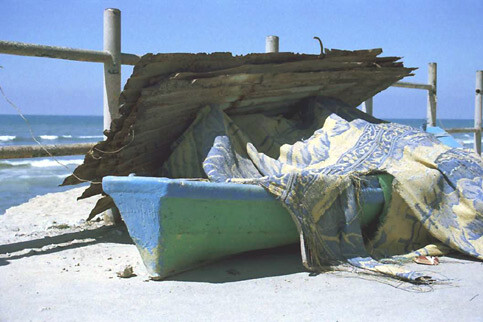UN Office for the Coordination of Humanitarian Affairs 19 April 2007

More than 40,000 Gazans depend on the fishing industry as their primary source of income. (Photo: Helga Tawil)
While Palestinian fishermen have recently been allowed to resume some fishing activities in the Gaza Strip’s coastal waters following a near total ban since June 2006, restrictions on where they can fish continue to undermine the industry.
More than 40,000 Gazans depend on the fishing industry as their primary source of income. However, they have become progressively impoverished in the last six years, requiring assistance. The World Food Programme (WFP), United Nations Relief and Works Agency for Palestine Refugees in the Near East (UNRWA) and other humanitarian agencies now provide food and support job creation for the fishing families.
At present, the Israeli authorities allow Palestinian fishing up to six nautical miles off the Gaza Coast, although a 2002 agreement between the United Nations and Israel allowed for Palestinian fishing up to 12 nautical miles off the coast, while the Oslo Accords stipulated fishing rights up to 20 nautical miles.
The Israeli Defence Forces maintain that the restrictions on fishing are needed to prevent smuggling of weapons into Gaza. “Easing the restrictions is critical now as the fishing high season has arrived,” said Margareta Wahlstroem, Assistant Secretary General for Humanitarian Affairs. Starting in April each year, there is a migration of fish from the Nile Delta to Turkish waters on which Palestinian fishermen have traditionally relied. However, the larger schools of fish are present some 10 nautical miles off the Gaza Strip coastline.
“Being confined so close to shore has meant poorer catches for Gazan fishermen in terms of fish size, value and quantity,” Wahlstroem added. The restrictions have also depleted fish stocks whose natural breeding grounds are close to the shore.
Many Gaza consumers now buy fish imported from Israel rather than from their own fishermen at a significantly higher price. Fish is beyond the reach of many of the Gaza Strip’s 1.5 million inhabitants.
Fishing rights appear to be imposed arbitrarily, with fishing allowed in some locations but not others, on some days and not others. A better understanding of the defined fishing limits and a means of communication between Israeli naval boats and fishermen would reduce the hazards to fishing.
To download the full report (PDF) click here.
Related Links